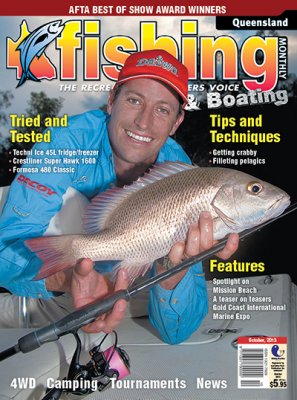Spotlight Mission Beach by FMG
 Mission Beach is a tropical holiday destination between Townsville and Cairns that is known for its world-heritage rainforests, idyllic beaches, island getaways, adventure activities and amazing fishing.
Mission Beach is a tropical holiday destination between Townsville and Cairns that is known for its world-heritage rainforests, idyllic beaches, island getaways, adventure activities and amazing fishing.
Mission Beach, with its resident population of about 4,000, is 165km south of Cairns and 235km north of Townsville. Its four villages - Bingil Bay, Mission Beach, Wongaling Beach and South Mission Beach - are linked by 14km of palm-fringed beaches.
The tourist destination enjoys a warm tropical climate with temperatures up around 26�C in the Australian winter (the dry season of May to October) and 30�C in the wet season (November to April).
Mission Beach offers an excellent array of accommodation from luxury resorts and upmarket holiday homes to secluded rainforest retreats and well-appointed bed and breakfasts. The tourist destination caters for romantic getaways, family holidays, birdwatchers, backpackers, adventure travellers, campers, caravanners and most importantly anglers.
Mission Beach offers a vast array of activities ranging from eco-friendly tours such as Great Barrier Reef trips and sea kayaking trips to extreme sports including tandem skydiving and white-water rafting.
A good range of services and shopping facilities are available including two supermarkets, a hardware store, medical centre, pharmacy and library. Cafes and restaurants feature local tropical produce.
Dunk Island is a 10-minute boat ride from Mission Beach. There are other islands close by.
Mission Beach is home to the endangered cassowary - a majestic bird that lives within the surrounding world heritage rainforest. Walks through the rainforest are another popular pastime for tourists.
The area produces an amazing array of rare and exotic tropical fruits and these can be sampled at the weekly tastings held at the Mission Beach Visitor Information Centre.
HISTORY
After the timber cutters came to the area over a century ago, farmers who introduced, amongst others, coffee, tea, bamboo, and mango plantations moved the area forward. The remnants can still be seen today. The difficulty in shipping produce to markets, combined with a devastating cyclone in 1918, led to a general demise in farming until a road to the area was built in 1936.
The fate of the indigenous Aboriginal inhabitants was similarly afflicted. Initially the white farmers used them as a cheap labour source but later they came to prefer working for Chinese employers, who would often pay in opium. This caused resentment towards the workers by the white settlers. It also led to the establishment of the Hull River Mission in 1914 (from where Mission Beach derives its name), which was destroyed by the 1918 cyclone.
These days Mission Beach is a tourism destination with small-scale farming and some larger scale farming of sugar cane and bananas in the area. But with a tropical climate that simply invited visitors year round, it is now tourism that is the main driver for Mission Beach, and once you've visited once, you'll be back again and again.
WHAT TO DO
Luckily Mission Beach is surrounded by fishy options. Less than an hour in any direction will see you having the chance to tangle with the secretive and elusive jungle perch, the icon of the north, the barramundi or chasing down a billfish or mackerel offshore. It really is an angler's paradise.
It is the bluewater, reef and barra fishing that really attracts anglers to Mission Beach. In a day you could literally chase barra and jacks in the rivers, head offshore for a spot of mackerel trolling and then head a little wider still for some of the country's best reef fishing. Mission Beach is the access hub for all of this